What is an exit poll? Scientists reveal whether the prediction tool is accurate – as voters cast their ballots TODAY
As Britons head to the polls en masse for the 2024 general election, the whole country is anxiously awaiting the outcome.
While true political fanatics will stay up all night to watch the votes roll in, the exit poll at 10pm tonight will give many a first taste of the outcome.
The exit poll is conducted every year by a consortium of broadcasters as an early prediction of the election outcome.
Unlike a regular poll, which asks voters what they plan to do during the election, an exit poll asks who they voted for as they leave the polling station.
Fortunately for those who go to bed early, scientists generally agree that the exit poll is a fairly accurate representation of the actual outcome.
Voters across the country will be lining up at polling stations today. But for those who don’t want to wait for the results to come in, the exit poll will be released at 10pm.
The exit poll is jointly funded by the BBC, Sky News and ITV News, while the actual research is carried out by research agency Ipsos.
This year, Ipsos is sending interviewers to 133 polling stations across the country.
As voters leave the polling station, they are asked to fill out a copy of the ballot paper exactly as they just did and place it in the poll worker’s ballot box.
According to Ipsos, four in five people contacted in the 2019 general election agreed to fill in the fictitious ballot paper, with some refusing to cast their vote.
Ipsos says it will ask a total of about 17,000 people from across the country to gauge their opinions on the various political parties.
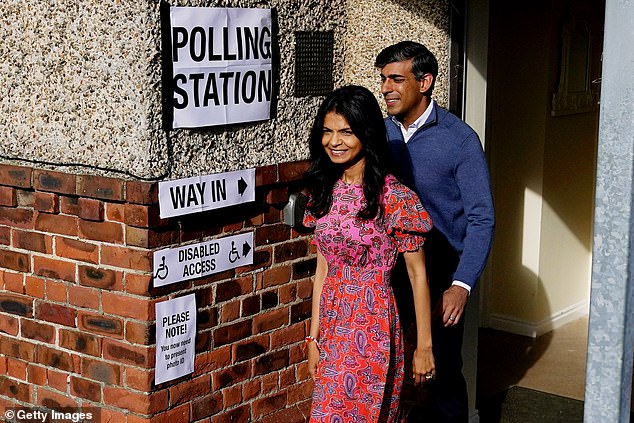
An exit poll asks voters, like Rishi Sunak pictured here casting his vote, how they had just voted. This is different from a regular poll which only asks about people’s intentions
These results are then collected and sent securely to a secret location in London, where statisticians and analysts are shielded from media influence.
It is believed that this will lead to a more accurate prediction of election outcomes than pre-election polls.
Michael Clemence from Ipsos UK said Sky News: ‘And we’re also talking about people’s behavior, so we’re not asking people how they plan to vote.
“We talk to voters who have just voted, and I ask them what exactly they did. That’s how we got rid of the error in the prediction polls.”
Pre-election polls can be less accurate because even small factors, such as the order of names on ballots, can influence people’s decisions at the ballot box.
However, asking people what they have already done removes any possible bias on the part of the interviewer.
Similarly, Dr Hannah Bunting, co-director of the Elections Centre at the University of Exeter, wrote in an article for The conversation that exit polls avoid many of the problems associated with political polls.
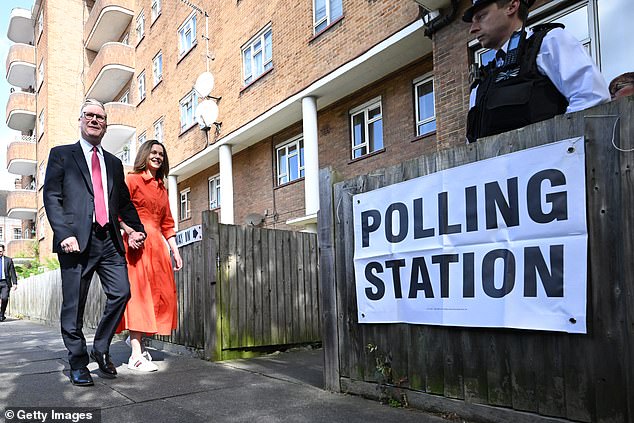
Exit polls provide a generally accurate first impression of how the mood might shift, experts say. This year, pollsters will interview around 17,000 voters, like Kier Starmer, pictured here casting his ballot
Dr. Bunting writes: ‘They repeat an action, rather than imagining what they might do.
“We know that they have voted, rather than having to estimate how likely they are to vote.”
The data collected during these interviews is then analyzed by a team of experts in the capital.
The current exit poll model was devised in 2005 by John Curtice, professor of politics at the University of Strathclyde, and David Firth, professor of statistics at the University of Warwick.
Professor Curtice Has claimed He knows the exit poll results by 2pm on election day – but if he told anyone, he could end up in jail.
Although millions of people still have to vote at 2pm, this is thought to be late enough for the results of key seats to be known.
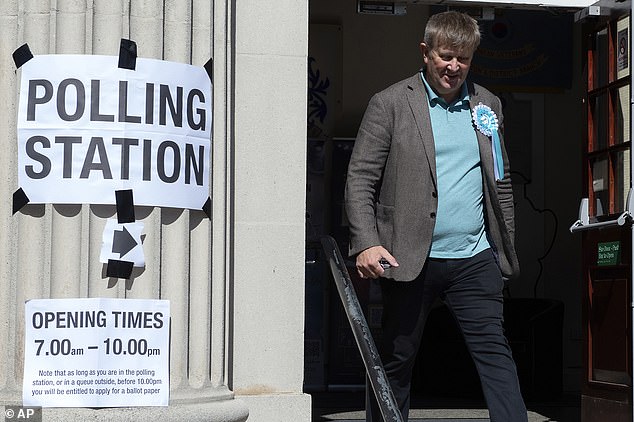
Because exit polls map what has already happened, they are less affected by voter bias and uncertainty.
Because pollsters only conduct interviews in a handful of constituencies across the country, they must look for trends and patterns to predict how other regions will vote.
Ipsos conducts its surveys in various urban and rural areas to examine the election results.
Marginal seats are also being examined more closely to help predict important changes in the electoral system.
Areas are also surveyed year after year, so that polls from previous elections and constituency data can be used to get a more general picture of voting behaviour.
Professor William Jennings, a polling expert from the University of Southampton and part of this year’s exit polling team, told Sky News: “We will try to find patterns in the data to explain as much of the variation as possible, to make sure our estimates are as reliable as possible.
“We’re going to map the change in the mood at each polling station and try to find patterns in that change. We’re also going to look for specific characteristics of constituencies that can predict change and that can predict what we see across the country.”
The analysts, currently safely locked in a bunker with no access to the outside world, will look at variables such as whether the constituency voted for Brexit or the number of people who own a car.
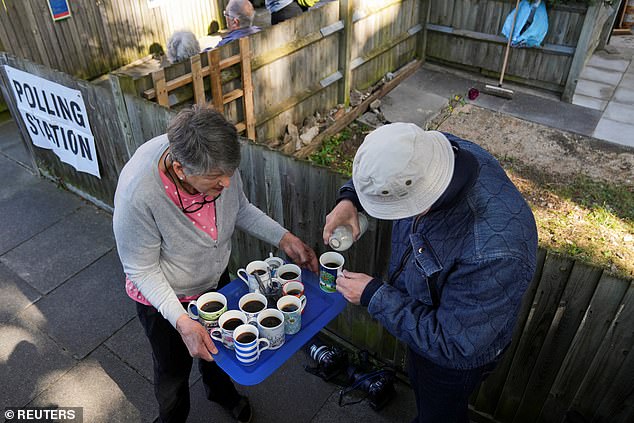
Since 2005, when this exit poll model was introduced, the predictions have only come true by a few seats each year.
Professor Sir David Spiegelhalter, a leading statistician from the University of Cambridge, told MailOnline: ‘This limited data provides estimates of the likelihood of different types of people changing their vote. This is the essence of an exit poll.
‘The likelihood of specific vote changes, combined with knowledge of vote shares in recent elections, yields estimates of new vote shares.’
Since its introduction in 2005, this model has proven to be very successful in predicting election outcomes with an accuracy of just a few seats.
At the last election in 2019, the poll was only three seats off for the Conservatives, predicting a difference of 368 seats when in reality it was 365.
The poll also slightly overestimated the success of the SNP and the Liberal Democrats, and thus slightly underestimated Labour’s final number of seats.
In 2017, the Conservatives and Labour were only one seat off in the exit polls.
The last time an exit poll went really wrong was in 1992, before the media companies worked together to produce a single exit poll.
That year, both exit polls predicted a deadlocked parliament, but in reality John Major’s Conservatives won a majority of 21 seats.
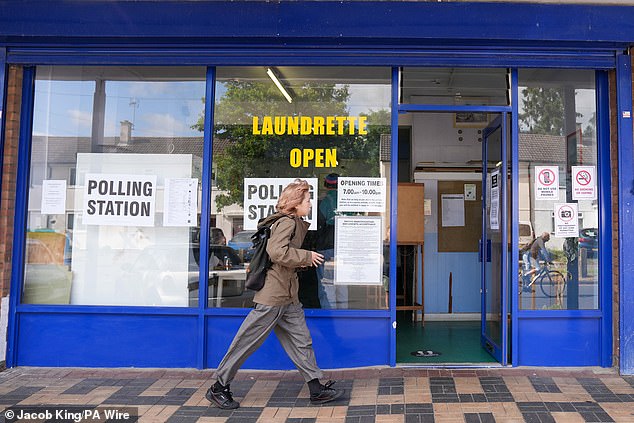
While the redrawn constituency boundaries may introduce some uncertainty, the exit poll is likely to give a good indication of which party will form the next government.
However, there are a few factors that could make this year’s exit poll slightly less reliable than usual.
As Dr Bunting points out, since the last election, the boundaries of a number of constituencies have been redrawn, and a number of new constituencies have been created.
This could make it somewhat more difficult for analysts to use past election data.
In addition, the likely magnitude of fluctuations this year may create some uncertainty in certain areas.
Professor Spiegelhalter also notes that the increasing prevalence of Reform UK ‘increases the complexity, but does not call into question the basic methodology.’
However, experts agree that this year’s exit poll is likely to produce a result that gives an indication of the broad nature of the outcome.
Professor Spiegelhalter says he does not consider the exit poll results to be certain, but that he will take them “very seriously”.
Although we will not know exactly who won until tomorrow morning, we will probably have a fairly clear picture of who will form the next government from 10 p.m.
